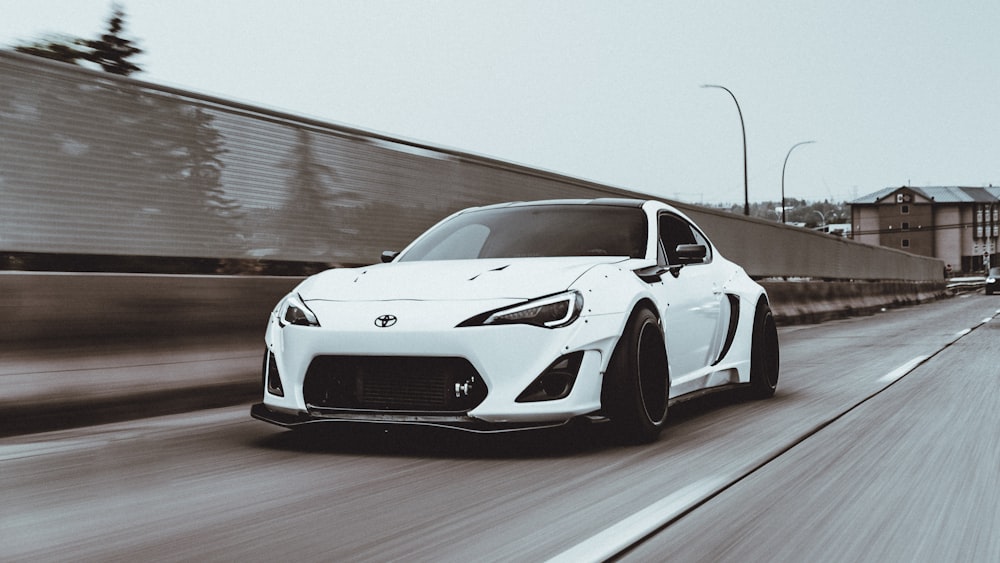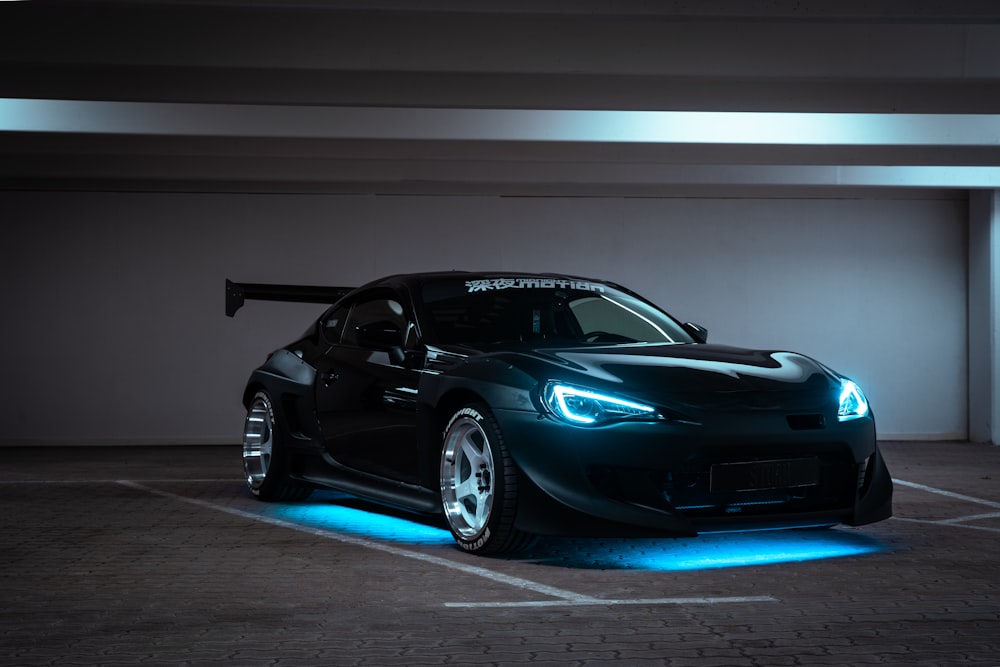What is a JDM Vehicle?
JDM stands for Japanese domestic market, meaning a JDM vehicle was manufactured in Japan, specifically for use in that country. Such vehicles comply with Japanese regulations and also feature certain specs that can't be found on other cars. Understanding the common characteristics and key factors of Japanese vehicles can help you determine if the one you're considering meets your needs.
- Unique design features - cars manufactured and sold on the Japanese market often feature engines, electronics and interior designs that you won't find in conventional vehicles from other countries.
- High performance engines - one of the features that JDM vehicle manufacturers are well known for in the automotive industry is their high performance engines, which translate to better handling and a popular choice for many car enthusiasts.
- Cultural influence - around the world, JDM vehicles are revered and recognized, due to their unique modifications and appearance.
- Importation - because JDM cars are marketed for the Japanese domestic market, they often don't meet emissions standards or have the same safety features as other countries, which makes importing them a bit tricky and something to consider for buyers who don't live in Japan.
- Value and Rarity - JDM models are considered rare in some international markets because they have not been officially sold outside Japan. That rarity contributes to their value, making JDM cars more expensive than others.
Some examples of JDM cars include Nissan Skyline GT-R, Toyota Supra, and Honda NSX, as well as Nissan Silvia, Mazda RX-7, Mitsubishi Lancer Evolution, Subaru Impreza WRX STI, and Honda Civic Type R. Car enthusiasts around the globe love JDM vehicles for their exceptional performance and increased driving pleasure. They are sought after as private vehicles and also fleet cars.
Differences Between JDM Cars and American Cars
The automotive culture in Japan is very different from that in America, which translates to several key factors and differences that you will see among cars manufactured in each country. That includes the way the cars look, but also includes their available safety features and market preferences. Here are some key differences between cars manufactured in the American market and those in the Japanese market.
Vehicle Design
- JDM cars place an emphasis on efficiency and a compact size, as well as advanced technology. That includes high marks for reliability, innovation and fuel efficiency. That includes the iconic revving engines and precise handling.
- American cars often place the focus on a larger size and interior comfort, combined with a powerful engine. SUVs and muscle cars are popular choices in the United States.
Engine Performance
- The goal of JDM vehicle manufacturers is high performance and fuel efficiency. It's common to find all wheel drive and high revving engines in such cars.
- On the other hand, the goal of an American car leans more toward engines that place priority on torque and horsepower, such as a V6 or V8 engine.
Manufacturer Standards and Regulations
- Japan has very strict emissions regulations, and therefore Japanese vehicles utilize a compact design and advanced safety features to meet these standards. They also must adhere to stringent emissions regulations.
- In the United States, cars must meet the regulations set forth by the country, which includes those that pertain to fuel economy, crash safety and emission standards, resulting in wide variety of designs and performance options.
Technology and Other Features
- As mentioned above, JDM cars often feature advanced technology that isn't available in other vehicle markets. This might include anything from electric vehicles and hybrid vehicles to infotainment systems and advanced navigation.
- Because consumer demands differ in America, the technology and features in cars manufactured for that market lean toward larger infotainment screens, heated and cooled seats and top of the line stereo/audio systems.
Size
- Japanese vehicle manufacturers typically opt for compact and smaller in sized cars than other markets. This agility aligns with the demand for precision driving and exceptional performance.
- American culture favors vehicles that are often much larger, placing an emphasis on spaciousness and comfort. Towing capacity, speed and powerful performance are priorities.
As you can see, there are several differences and key factors to keep in mind when it comes to JDM cars versus American made vehicles. Understanding this helps you decide which type of car is right for you, and also gives you important clues as to whether you're looking at a JDM car or one from another market.
Environmental Benefits of JDM Engines

Because of the design and regulations that exist for Japanese engines, there are some major benefits when it comes to their environmental impact, as well as a whole list of additional benefits, which are mentioned below.
- Fuel efficiency - Japanese engines are focused on high fuel efficiency with smaller displacement engines that require less gasoline to operate.
- Hybrid and electric motors - the use of electric and hybrid engines controls fuel use, thereby reducing carbon emissions and offering peace of mind for environmental cost concerns.
- Strict emissions laws - Japan requires car manufacturers to produce engines that limit pollutants, including CO2 emissions and other particulates.
- Advanced emission control - catalytic converters, particulate filters and exhaust gas recirculation systems are a few of the ways that Japanese engines meet the stringent emissions guidelines.
- Efficient engines - Japanese vehicle manufacturers often use advanced features that make the engines run more efficiently, including direct fuel injection, turbocharging, and variable valve timing.
- Stop-start systems - stop-start technology automatically turns off the car's engine when idling, which reduces fuel consumption and CO2 emissions.
- Lightweight vehicles - JDM cars tend to be constructed of lighter weight materials, improving fuel economy and reducing emissions at the same time.
- Enhanced aerodynamics - with an emphasis on aerodynamics, there is far less drag with a JDM car, which improves appearance, but also lowers GHG emissions.
- Smaller engines - smaller internal combustion engines naturally produce lower levels of tailpipe emissions and are more fuel efficient. In some cases, Japanese manufacturers will do an engine swap to make this happen.
- Alternative fuels - many JDM vehicles are compatible with alternative fuels, such as compressed natural gas and biofuels, which meet greenhouse gas emission standards much more easily than traditional fossil fuels, such as gasoline and diesel fuel. There is also a good selection of electric vehicles.
- Recycling - not only do Japanese car manufacturers work to minimize harm to the environment when they produce cars, but they are also committed to recycling cars and their parts when they are no longer operable, as well as using recycled materials when manufacturing new cars, which also contributes to cost effective measures.
- Urban driving - JDM cars are created with urban driving as the focus, which means a lot of stop and go traffic. Specialized technology for this type of driving environment means reduced emissions and improved fuel efficiency, including more miles per gallon.
In general, JDM engines are manufactured, adhering to strict regulations regarding environmental impact. When compared to other markets, Japanese domestic market vehicles have a much smaller environmental footprint without sacrificing the exceptional performance you want.
Other Reasons to Choose a JDM Car

Environmental performance isn't the only reason to choose a JDM car. There are plenty of additional benefits that you can take advantage of.
- Exclusive models
- A wide range of models in vehicle stock
- Advanced technology
- High performance engines
- Tuning potential
- Attention to detail
- Distinctive styling
- Connection to car culture
- Cost effective
- Retain their value
- Electric vehicles and hybrid engines
- Historic models
- Motorsport success
When you choose a JDM vehicle, you get the environmental performance you want coupled with reliability, premier driving experience, and distinct style that's expected from Japanese vehicle manufacturers.
If you choose a JDM car, it's important to know you can maintain it as easily as if you purchased a car from the Ford Motor Company. You can rely on JDM West Coast to provide the best in JDM engines and auto parts.


